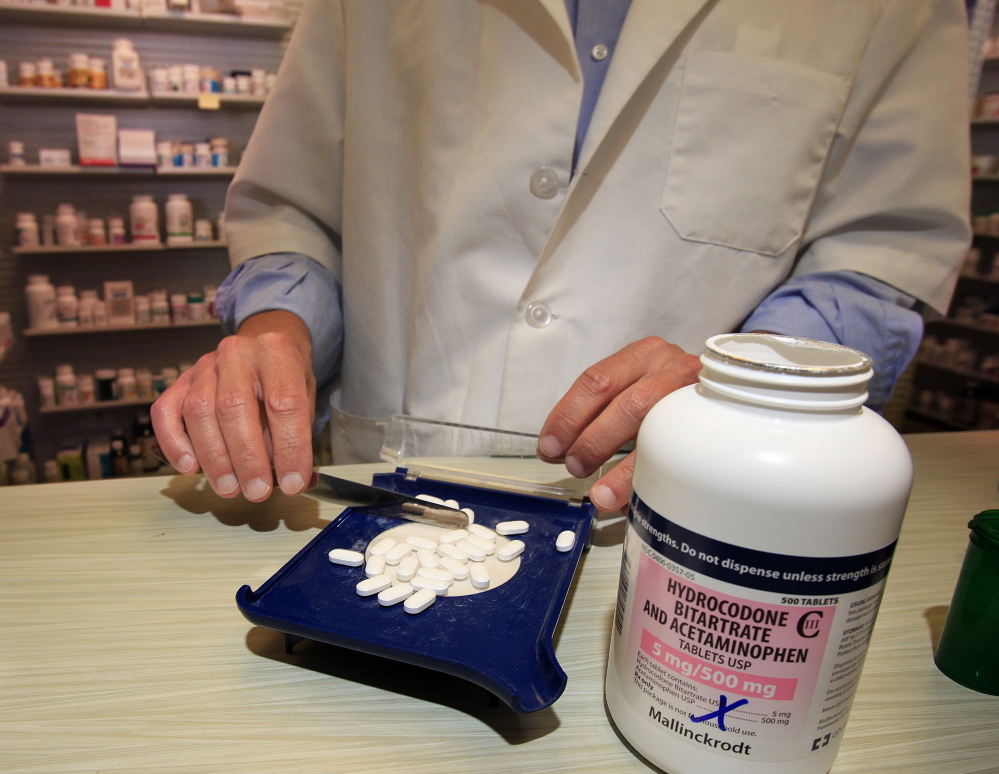Maine has a reputation as a national leader in painkiller prescription and addiction rates. Now, it’s trying to reverse the trend with a new type of treatment.
The state recently overhauled its approach to long-term pain management for MaineCare patients, pushing doctors to prescribe comprehensive treatment plans – including physical and psychological therapy – instead of pills. It’s consistent with a national move away from medication, and it’s working to reduce pain, as well as drug reliance, according to Kevin Flanigan, medical director of the Office of MaineCare Services.
The 5.4 million painkillers given to patients in the first six months of 2014 is half the number handed out over the same period two years ago, he said.
The reduction in pills has saved the state $1.3 million, while it has spent an estimated $750,000 on alternative pain management practices, such as chiropractic treatments and cognitive behavioral therapy, he said.
Maine had the nation’s highest rate of prescriptions for long-term, extended-release opiate medications in 2012, according to a study released in July 2014 by the U.S. Centers for Disease Control and Prevention.
The state also had the nation’s highest rate of citizens seeking publicly funded treatment for addiction to painkillers in 2011, according to data from the state and the Substance Abuse and Mental Health Services Administration.
Pain management also has gotten the attention of the federal government, which has acknowledged that it is a public health problem that’s going to get worse as the population ages and the obesity rate continues to rise. Some 100 million Americans with chronic pain are costing the country $560 billion to $635 billion annually in health care and lost productivity, according to a 2011 Institute of Medicine report.
The U.S. Department of Health and Human Services has a stated objective to “increase the safe and effective treatment of pain,” including by reducing serious injuries and deaths from pain medication by 2020. Also, a multi-agency federal task force is putting together a National Pain Strategy that was expected to be published by the end of this year, said Linda Porter, policy adviser for the National Institutes of Health Pain Consortium. The plan will include enhanced public awareness of pain management and address disparities in treatment, a lack of professional education in the field and the absence of data about pain, she said.
Flanigan, the MaineCare medical director, said figuring out the prevalence of pain in Maine would be nearly impossible, although such data would be helpful to the medical community, which relies on painkiller prescription data to evaluate the problem.
He attributes the recent rise in painkiller use to an expectation, which he says was established by medication manufacturers, that chronic pain can and should be eliminated. But, with well documented downsides to the drugs, such as misuse, addiction-related crime and drug-affected babies, the attitude of the medical community is changing, he said. The focus now is more “what’s your level of function and what can we do to improve that instead of how many pills do you need to be pain-free.”
The state’s strategy – to require prior authorizations, office visits and alternative types of treatment before renewing a prescription – is to combat the problem of addiction, not by focusing on the abuse itself but by shifting to a more progressive approach to pain management.
State officials didn’t set specific goals for reducing the reliance on painkillers, but the results are better than they could have imagined, Flanigan said.
“We’re having better outcomes because our patients are getting better treatment,” he said.
The state approach is consistent with the prevailing national trend in pain management toward combining a variety of practices, from physical therapy and acupuncture to exercise and eating right.
The integrated approach first emerged in the 1980s, but fell out of favor because insurance companies wouldn’t cover the cost of those treatments, said Bob Twillman, incoming executive director of the American Academy of Pain Management. Prescription painkillers became the pain relief of choice, despite the lack of information about their long-term effectiveness.
The medical field, however, is now recognizing multi-disciplinary pain management as more effective. Despite higher up-front costs, it’s less expensive over time than keeping patients on painkillers for the rest of their lives, Twillman said.
Another trend in pain treatment is the use of medical marijuana, Twillman said. Maine is one of the 23 states where it’s legal.
The state no longer tracks the total number of medical marijuana patients or the overall breakdown of medical reasons for using the drug. However, “intractable pain” is considered to be one of the most often-cited medical complaints by Maine patients seeking a doctor’s recommendation to use marijuana.
Send questions/comments to the editors.




Success. Please wait for the page to reload. If the page does not reload within 5 seconds, please refresh the page.
Enter your email and password to access comments.
Hi, to comment on stories you must . This profile is in addition to your subscription and website login.
Already have a commenting profile? .
Invalid username/password.
Please check your email to confirm and complete your registration.
Only subscribers are eligible to post comments. Please subscribe or login first for digital access. Here’s why.
Use the form below to reset your password. When you've submitted your account email, we will send an email with a reset code.